Discover Your Rooftop Oasis
Ever dreamed of a garden paradise like the Hanging Gardens of Babylon, right on your rooftop? You can create it with low-maintenance planter designs tailored for busy schedules. Start with self-watering systems; these hold up to 2 gallons, reducing watering to once a week. Explore drought-tolerant picks like sedum, thriving in 6-inch-deep pots. Stick around to uncover more practical solutions for effortless greenery!
Contents
- 1 Self-Watering Planter Systems for Effortless Care
- 2 Drought-Tolerant Plant Selections for Minimal Watering
- 3 Modular Planter Designs for Easy Rearrangement
- 4 Vertical Garden Walls for Space-Saving Greenery
- 5 Durable Container Materials for Long-Lasting Use
- 6 Succulent and Cactus Displays for Low Upkeep
- 7 Automated Irrigation Setups for Hands-Free Hydration
- 8 Raised Bed Planters for Simplified Maintenance
- 9 Native Plant Choices for Natural Adaptation
- 10 Compact Herb Gardens for Functional Beauty
Self-Watering Planter Systems for Effortless Care
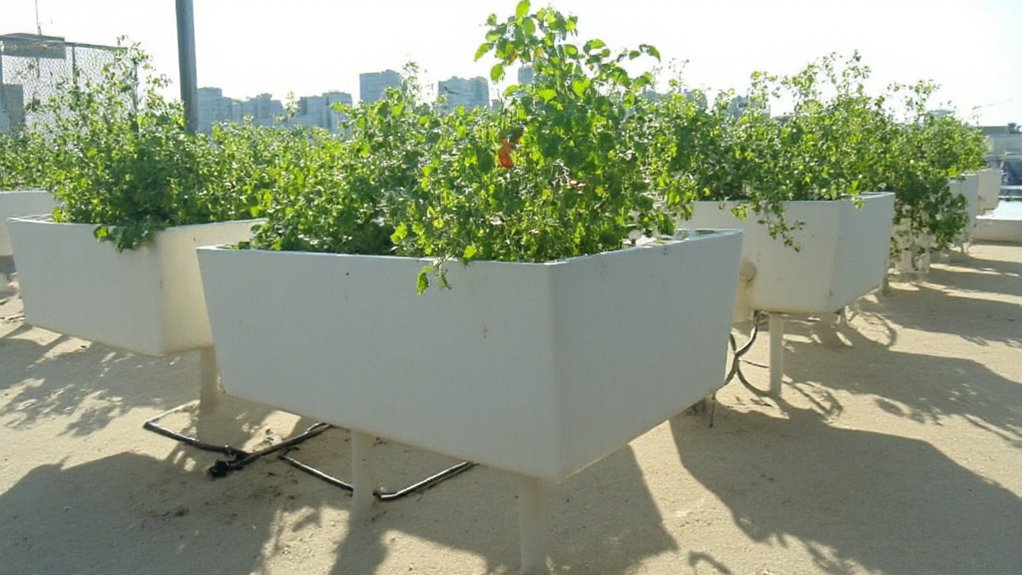
Self-watering planter systems are a game-changer for busy gardeners looking to minimize upkeep while maintaining a thriving rooftop garden. These innovative containers feature a built-in reservoir that stores water, allowing plants to draw moisture as needed through a wicking system or capillary action. This design reduces the frequency of manual watering, ensuring plants stay hydrated even during hot, dry spells or when gardeners are away for extended periods.
Additionally, self-watering planters help prevent overwatering and root rot by providing a consistent moisture level tailored to the plant’s needs. Many of these systems also include overflow drainage to avoid water buildup during heavy rain. Ideal for rooftop environments where access to water might be limited, these planters make gardening more accessible and sustainable for those with tight schedules.
Drought-Tolerant Plant Selections for Minimal Watering
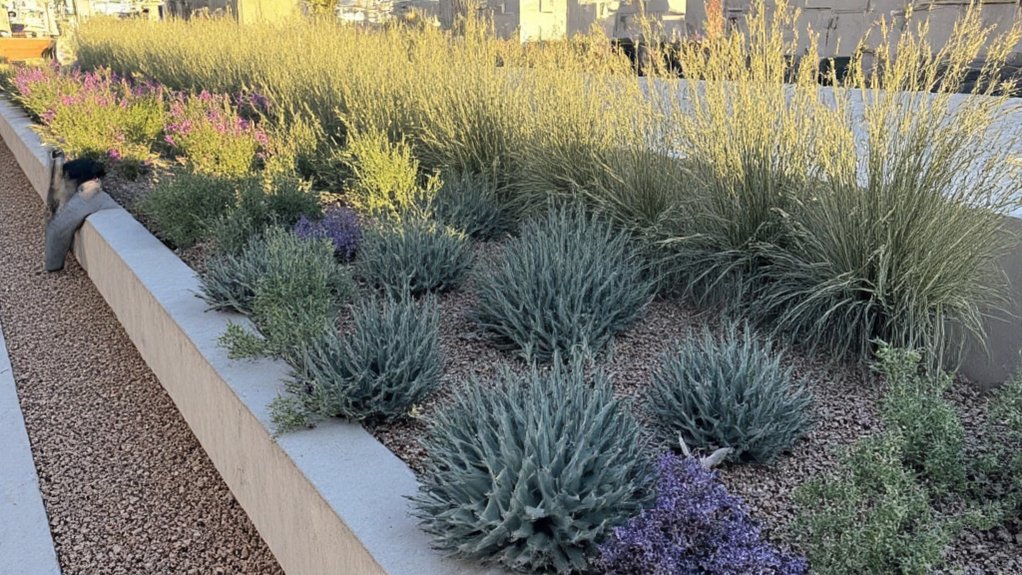
Drought-tolerant plants are an ideal choice for rooftop planters, especially for busy gardeners who want to minimize watering needs. These plants are adapted to thrive in arid conditions, requiring less frequent irrigation while still adding beauty and greenery to your space. By selecting species that can withstand dry spells, you can create a low-maintenance garden that conserves water and reduces upkeep.
Some popular drought-tolerant options include succulents like sedum and echeveria, which store water in their fleshy leaves, and ornamental grasses such as blue fescue or fountain grass, which add texture with minimal care. Mediterranean herbs like lavender, rosemary, and thyme also flourish in dry conditions, offering both aesthetic appeal and culinary benefits. Pair these plants with well-draining soil and secure proper drainage in your planters to prevent root rot, and you’ll have a thriving rooftop garden with little effort.
Modular Planter Designs for Easy Rearrangement
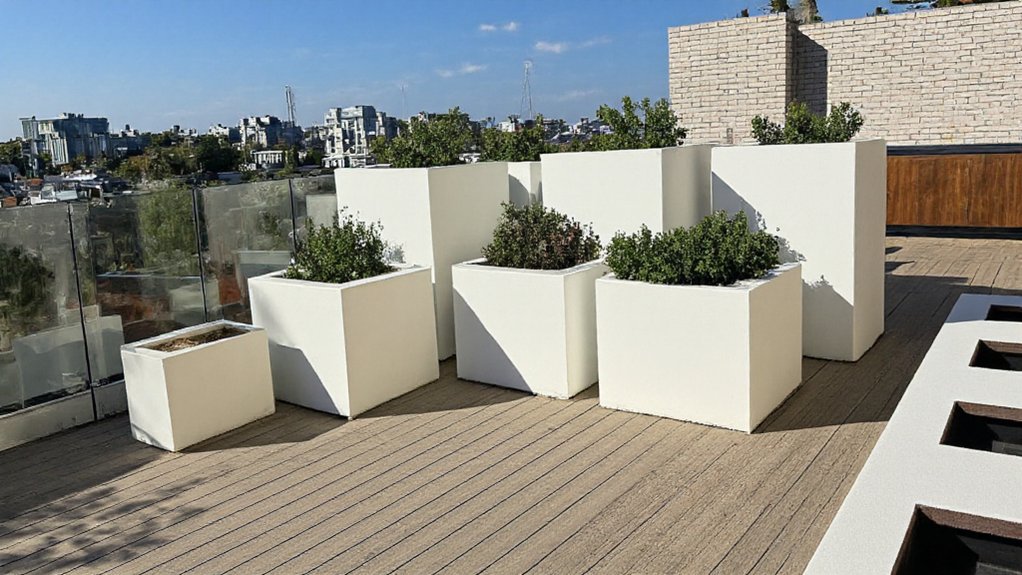
Modular planter designs are a game-changer for busy gardeners who value flexibility and ease in maintaining their rooftop gardens. These planters consist of individual units or sections that can be easily assembled, disassembled, and rearranged to suit changing needs or aesthetic preferences. Whether you want to create a new layout, accommodate seasonal plants, or simply refresh the look of your space, modular designs allow for quick adjustments without the hassle of uprooting entire setups.
Additionally, modular planters often come with interlocking or stackable features, making them ideal for maximizing limited rooftop space. They are typically
Vertical Garden Walls for Space-Saving Greenery
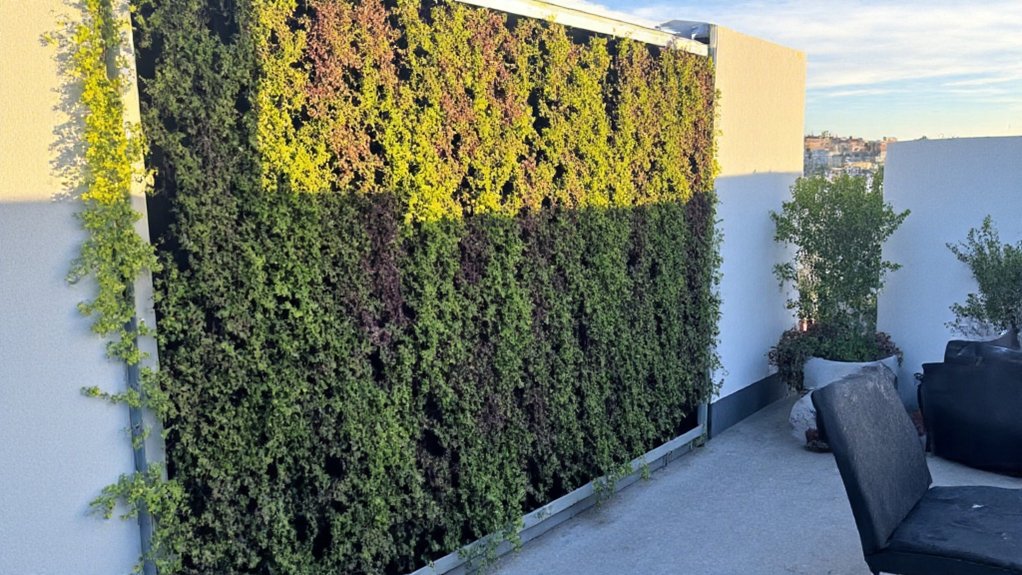
Vertical garden walls are an innovative solution for busy gardeners looking to maximize greenery in limited spaces. These structures, often mounted on walls or fences, utilize vertical space to grow a variety of plants, including herbs, succulents, and small flowers, without taking up valuable floor area. Ideal for urban environments or small rooftops, vertical gardens can transform bare walls into lush, living art pieces while requiring minimal maintenance.
These systems often incorporate modular planters or pocket-style designs that make it easy to water and care for plants. Many vertical garden walls also come with built-in irrigation systems, reducing the time and effort needed for upkeep. By choosing low-maintenance plants and ensuring proper drainage, busy gardeners can enjoy a vibrant, space-saving garden with little daily intervention.
Durable Container Materials for Long-Lasting Use
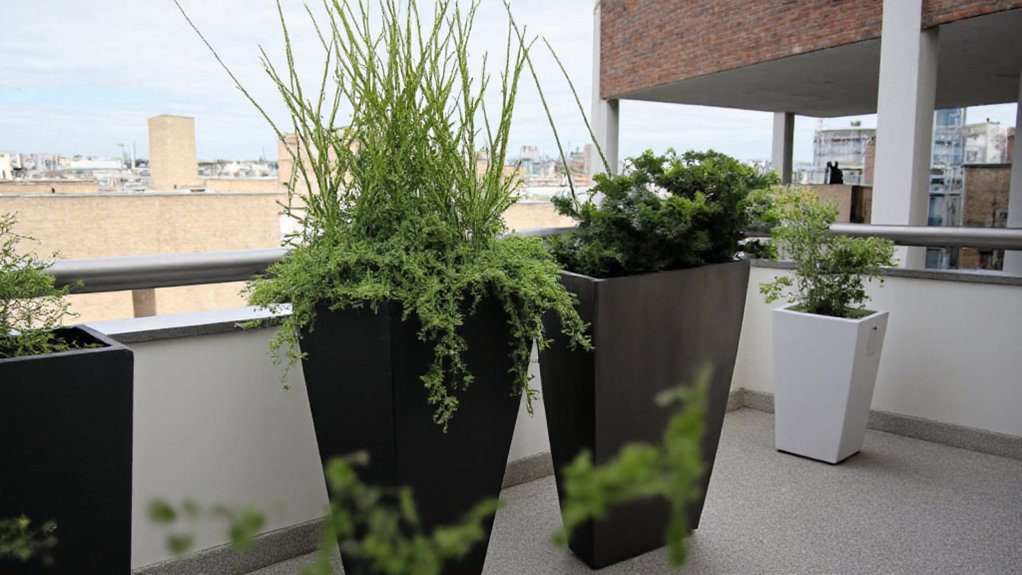
When designing low-maintenance rooftop planters, choosing durable container materials is essential for long-lasting use. Materials like fiberglass, resin, and high-quality plastics are excellent options as they are lightweight, weather-resistant, and resistant to cracking or fading over time. These materials can withstand harsh rooftop conditions, including intense sunlight, wind, and temperature fluctuations, without deteriorating quickly.
Additionally, metal containers, such as those made from galvanized steel or aluminum, offer durability and a modern aesthetic, though they may require protective coatings to prevent rust. Ceramic or terracotta pots, while visually appealing, are more prone to cracking in extreme weather and may need extra care. Opting for frost-resistant or reinforced versions of these materials can extend their lifespan, ensuring that busy gardeners spend less time on repairs or replacements.
Succulent and Cactus Displays for Low Upkeep
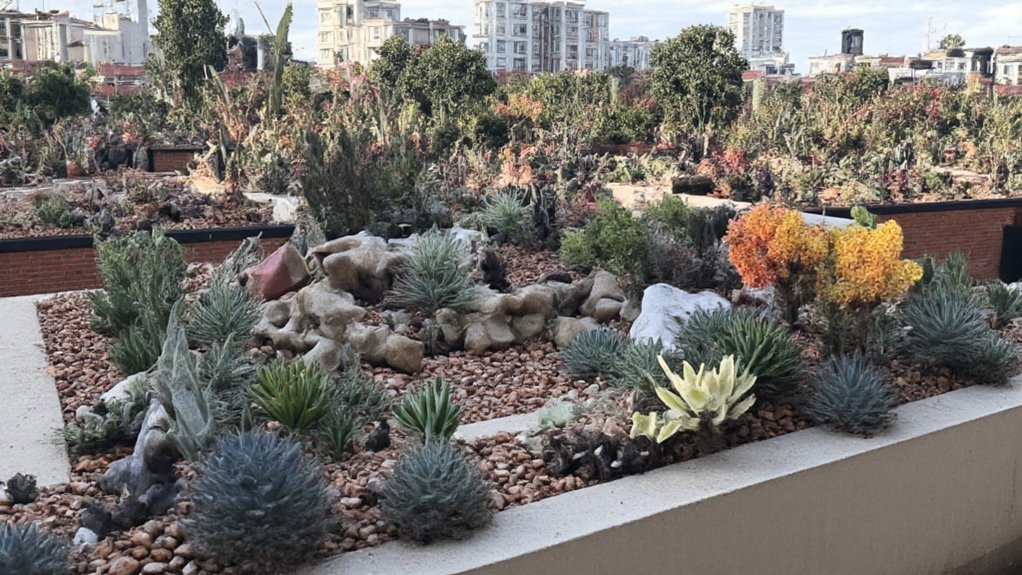
Succulent and cactus displays are ideal for busy gardeners seeking low-maintenance rooftop planter designs. These hardy plants thrive in arid conditions, requiring minimal watering and care, which makes them perfect for rooftop environments often exposed to intense sun and wind. Their ability to store water in their leaves or stems allows them to endure long periods of neglect, guaranteeing they remain vibrant even with sporadic attention.
Additionally, succulents and cacti come in a wide variety of shapes, sizes, and colors, offering endless possibilities for creative and visually striking arrangements. They can be paired with decorative rocks, gravel, or sand to enhance drainage and mimic their natural desert habitats, further reducing the need for frequent maintenance. This combination not only creates a stunning aesthetic but also guarantees a resilient garden that fits seamlessly into a busy lifestyle.
Automated Irrigation Setups for Hands-Free Hydration

Automated irrigation setups are a game-changer for busy gardeners looking to maintain rooftop planters with minimal effort. These systems use timers, sensors, and drip irrigation lines to deliver water directly to the plants’ roots at scheduled intervals, ensuring consistent hydration without manual intervention. By customizing the watering schedule based on plant needs and weather conditions, gardeners can prevent overwatering or underwatering, promoting healthier growth.
Many automated systems can be connected to a smartphone app, allowing remote monitoring and adjustments, which is ideal for those with unpredictable schedules. Installation is often straightforward, with options ranging from simple battery-operated timers to more advanced setups with moisture sensors that adapt to real-time soil conditions. This hands-free approach not only saves time but also conserves water, making it an efficient choice for rooftop gardening.
Raised Bed Planters for Simplified Maintenance
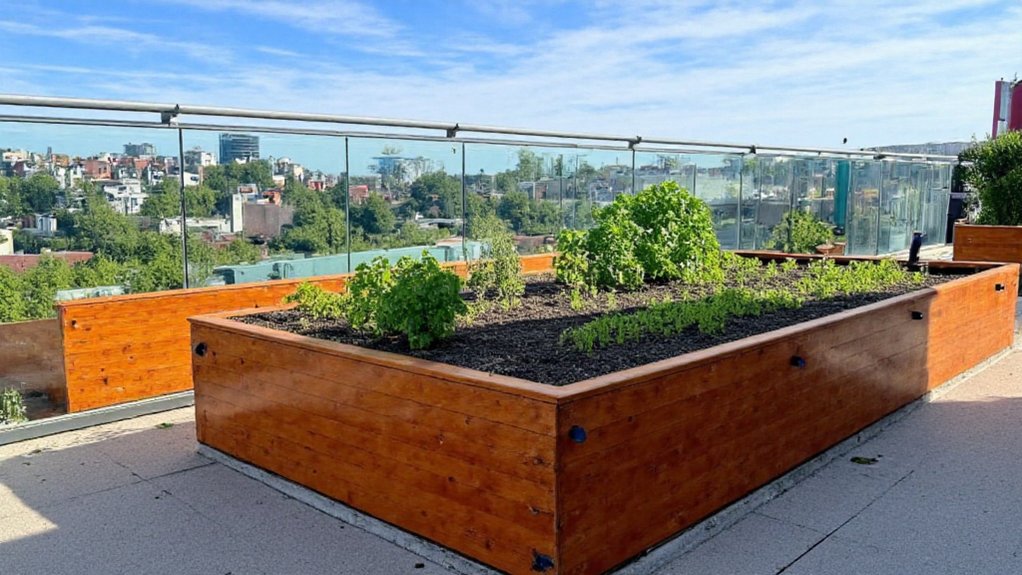
Raised bed planters are an excellent choice for busy gardeners seeking low-maintenance rooftop gardening solutions. These elevated structures allow for better control over soil quality, drainage, and weed management, reducing the time and effort needed for upkeep. By lifting the planting area off the rooftop surface, raised beds minimize strain on the gardener’s back and knees, making tasks like planting, watering, and harvesting more accessible and less physically demanding.
Additionally, raised bed planters can be customized with self-watering systems or drip irrigation, further cutting down on maintenance needs. They also provide an opportunity to create a defined growing space, which helps in organizing plants and optimizing sunlight exposure on a rooftop. With the right materials, such as durable, weather-resistant wood or metal, raised beds can withstand harsh rooftop conditions while offering a neat, contained gardening area that requires minimal attention.
Native Plant Choices for Natural Adaptation
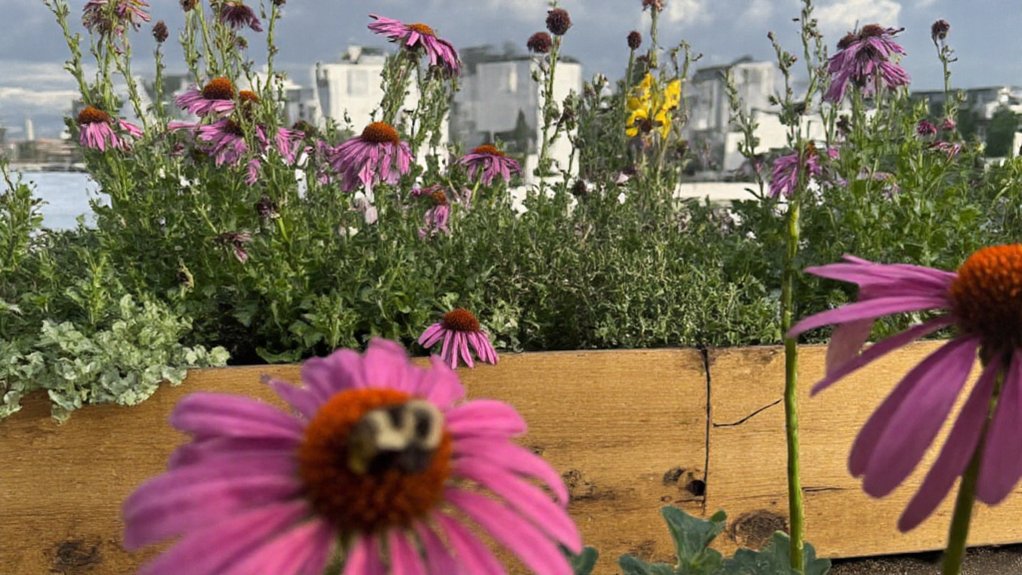
Choosing native plants for rooftop planters is a smart strategy for busy gardeners seeking low-maintenance greenery. Native plants are naturally adapted to the local climate, soil conditions, and rainfall patterns, which means they require less watering, fertilizing, and pest control compared to non-native species. By selecting plants that are indigenous to your region, you can create a thriving rooftop garden that aligns with the surrounding ecosystem and supports local wildlife, such as pollinators like bees and butterflies.
Additionally, native plants often have deep root systems that help them withstand drought and other environmental stresses, making them ideal for the exposed conditions of a rooftop. Consulting with local nurseries or extension services can help you identify the best native species for your area, ensuring your planter design is both sustainable and visually appealing with minimal effort.
Compact Herb Gardens for Functional Beauty

Compact herb gardens are an ideal solution for busy gardeners seeking both functionality and aesthetic appeal in their rooftop spaces. These small-scale gardens are designed to fit into limited areas, making them perfect for urban environments or rooftops with minimal room. By utilizing containers, raised beds, or vertical planters, gardeners can grow a variety of herbs like basil, mint, thyme, and rosemary, which not only enhance culinary creations but also add a touch of greenery to the surroundings.
Beyond their practical use, compact herb gardens contribute to the overall beauty of a rooftop by introducing texture, color, and fragrance. They can be arranged in decorative pots or modular systems to create visually appealing layouts that complement the rooftop’s design. Easy to maintain with minimal watering and pruning, these gardens provide a low-effort way to enjoy fresh, homegrown herbs while elevating the ambiance of any outdoor space.
